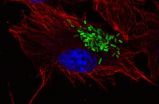(Press-News.org) Fire the coach? Not so fast says a new study of elite college football teams.
Professors from the University of Colorado and Loyola University Chicago studied what happened to the records of college football teams that replaced a head coach for performance reasons in the Football Bowl Subdivision (formerly Division 1-A) between 1997 and 2010. Over this period, an average of 10 percent of FBS teams fired their coach each year because of the team's poor performance on the field.
The authors used statistical methods to compare groups of teams that were similar except for the fact that one set of teams replaced their coach in an attempt to improve performance while the other set of teams did not. They assessed how coaching replacements affected team performance for the four years following a replacement. They found that, on average:
When a team had been performing particularly poorly, replacing the coach resulted in a small, but short-lived, improvement in performance after a change.
The records of mediocre teams -- those that, on average, won about 50 percent of their games in the year prior to replacing a coach -- became worse.
The statistical findings "suggest that the relatively common decision to fire head college football coaches for poor team performance may be ill-advised," write political science professors Scott Adler of CU-Boulder, Michael Berry of CU Denver and David Doherty of Loyola University Chicago. Their study was the result of several years of research starting in about 2008 and was published online last month in the journal Social Science Quarterly.
Adler said, "For every team that does better following a change, there is another that sees a dip in performance. Moreover, there is just as much volatility in win/loss records of teams that do and do not replace their coaches."
It is the first analysis of college football teams to track the effects of coaching replacement over several years. It also used unique statistical techniques to "match" teams that replaced their coach to teams that had been performing similarly but did not replace their coach. This approach provided a way to separate the effects of the coaching replacement from other factors – most notably past performance – that may explain differences in performance between teams with a new coach and teams with an established coach.
The statistical analysis doesn't mean there are no exceptions, Adler said. Some teams that replace their coach do perform better – but the same can be said about teams that do not replace their coach. "What our findings demonstrate is that, on average, replacing a coach in an attempt to boost performance is not a winning proposition," he said.
"Our findings have important practical implications for the high-stakes environment that is contemporary college football," the authors write. "When a college football team's performance is disappointing, the first and often only remedy administrators, fans and sports writers turn to is firing the coach. This is usually an expensive approach to solving the problem.
"Despite the fanfare that often accompanies the hiring of a new coach, our research demonstrates that at least with respect to on-field performance, coach replacement can be expected to be, at best, a break-even antidote."
###
Contact:
Scott Adler, CU-Boulder
e.scott.adler@colorado.edu
Michael Berry, CU Denver
michael.berry@ucdenver.edu
Peter Caughey, CU-Boulder media relations, 303-492-4007
caughey@colorado.edu
Editors: The complete study is available at
http://onlinelibrary.wiley.com/doi/10.1111/j.1540-6237.2012.00929.x/full.
Fire the coach? Not so fast, says new study by University of Colorado, Loyola professors
2012-11-16
ELSE PRESS RELEASES FROM THIS DATE:
New whale shark study used metabolomics to help understand shark and ray health
2012-11-16
New research from Georgia Aquarium and Georgia Institute of Technology provides evidence that a suite of techniques called "metabolomics" can be used to determine the health status of whale sharks (Rhincodon typus), the world's largest fish species. The study, led by Dr. Alistair Dove, Director of Research & Conservation at Georgia Aquarium and an adjunct professor at Georgia Tech, found that the major difference between healthy and unhealthy sharks was the concentration of homarine in their in serum—indicating that homarine is a useful biomarker of health status for the ...
$20 million CU-Boulder instrument package set for integration on Mars spacecraft
2012-11-16
A $20 million remote sensing instrument package built by the University of Colorado Boulder, which is leading a 2013 NASA mission to understand how Mars might have lost its atmosphere, has been delivered to Lockheed Martin in Littleton, Colo., for spacecraft integration.
The remote sensing package designed and built by CU-Boulder's Laboratory for Atmospheric and Space Physics consists of the Imaging UltraViolet Spectrograph, or IUVS, as well as its electronic control box, the Remote Sensing Data Processing Unit, or RSDPU, both under contract to NASA Goddard Spaceflight ...
CSA group and IPAC-CO2 announce world's first standard for geologic storage of carbon dioxide
2012-11-16
Regina & Toronto, November 15, 2012 – CSA Group, a leading developer of standards, codes and training programs, and the International Performance Assessment Centre for Geologic Storage of Carbon Dioxide (IPAC-CO2 Research Inc.), an environmental non-government organization (ENGO), today announced the world's first bi-national carbon capture and storage (CCS) standard for the geologic storage of carbon dioxide (CO2) for Canada and the United States.
CCS is a process consisting of the separation of CO2 from industrial and energy-related sources, transport to a storage ...
Nano insights could lead to improved nuclear reactors
2012-11-16
PASADENA, Calif.—In order to build the next generation of nuclear reactors, materials scientists are trying to unlock the secrets of certain materials that are radiation-damage tolerant. Now researchers at the California Institute of Technology (Caltech) have brought new understanding to one of those secrets—how the interfaces between two carefully selected metals can absorb, or heal, radiation damage.
"When it comes to selecting proper structural materials for advanced nuclear reactors, it is crucial that we understand radiation damage and its effects on materials properties. ...
Mixing processes could increase the impact of biofuel spills on aquatic environments
2012-11-16
Ethanol, a component of biofuel made from plants such as corn, is blended with gas in many parts of the country, but has significantly different fluid properties than pure gasoline. A group of researchers from the University of Michigan wondered how ethanol-based fuels would spread in the event of a large aquatic spill. They found that ethanol-based liquids mix actively with water, very different from how pure gasoline interacts with water and potentially more dangerous to aquatic life. The scientists will present their results, which could impact the response guidelines ...
Creating a coating of water-repellent microscopic particles to keep ice off airplanes
2012-11-16
To help planes fly safely through cold, wet, and icy conditions, a team of Japanese scientists has developed a new super water-repellent surface that can prevent ice from forming in these harsh atmospheric conditions. Unlike current inflight anti-icing techniques, the researchers envision applying this new anti-icing method to an entire aircraft like a coat of paint.
As airplanes fly through clouds of super-cooled water droplets, areas around the nose, the leading edges of the wings, and the engine cones experience low airflow, says Hirotaka Sakaue, a researcher in the ...
Visualizing floating cereal patterns to understand nanotechnology processes
2012-11-16
Small floating objects change the dynamics of the surface they are on. This is an effect every serious student of breakfast has seen as rafts of floating cereal o's arrange and rearrange themselves into patterns on the milk. Now scientists have suggested that this process may offer insight into nanoscale engineering processes.
"Small objects floating on the fluid-air interface deform the surface and attract each other through capillary interactions, a phenomenon dubbed `The Cheerios Effect,''' explains student Khoi Nguyen. "Interesting motions occur here caused by attractive ...
Study finds how bacteria inactivate immune defenses
2012-11-16
A new study by researchers at Imperial College London has identified a way in which Salmonella bacteria, which cause gastroenteritis and typhoid fever, counteract the defence mechanisms of human cells.
One way in which our cells fight off infections is by engulfing the smaller bacterial cells and then attacking them with toxic enzymes contained in small packets called lysosomes.
Published today (Thursday) in Science, the study has shown that Salmonella protects itself from this attack by depleting the supply of toxic enzymes.
Lysosomes constantly need to be replenished ...
Arthritis study reveals why gender bias is all in the genes
2012-11-16
Researchers have pieced together new genetic clues to the arthritis puzzle in a study that brings potential treatments closer to reality and could also provide insights into why more women than men succumb to the disabling condition.
Rheumatoid arthritis – which affects more than 400,000 people in the UK and about 1% of the world's population – is a complicated disease: lifestyle and environmental factors, such as smoking, diet, pregnancy and infection are thought to play a role, but it is also known that a person's genetic makeup influences their susceptibility to the ...
Uncommon features of Einstein's brain might explain his remarkable cognitive abilities
2012-11-16
TALLAHASSEE, Fla. Portions of Albert Einstein's brain have been found to be unlike those of most people and could be related to his extraordinary cognitive abilities, according to a new study led by Florida State University evolutionary anthropologist Dean Falk.
Falk, along with colleagues Frederick E. Lepore of the Robert Wood Johnson Medical School and Adrianne Noe, director of the National Museum of Health and Medicine, describe for the first time the entire cerebral cortex of Einstein's brain from an examination of 14 recently discovered photographs. The researchers ...



